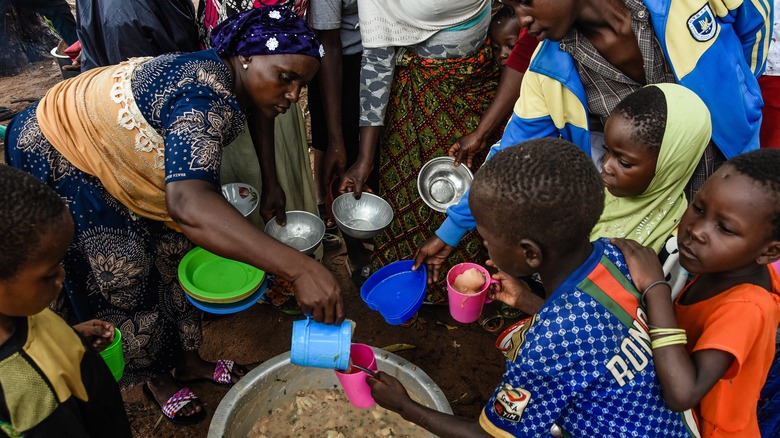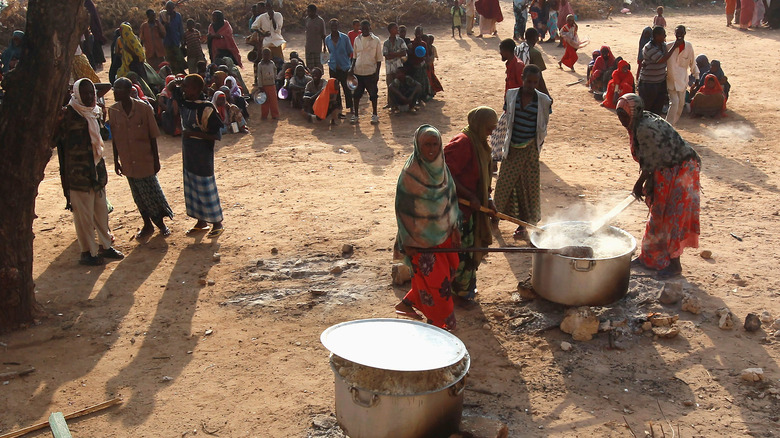The Disturbing State Of The Food Crisis In Somalia Is Set To Get Worse
In 2011, a famine in Somalia affected over three million people (via ScienceDirect). Between droughts, rising food costs, and violent conflicts, over 250,000 Somalians died, and roughly half of those deaths were children under the age of five — 10% of Somalian children in that age range at the time, according to UN News.
Despite efforts to help, early warnings went unheeded and assistance could not always be easily provided to people most in need. After the official famine was declared, the U.N. was able to innovate the way they distributed assistance in order to reach more people.
Somalia has been struggling with a similar situation recently, with increased food insecurity and a prolonged drought. Some areas have not seen rain for two years now, reports Reuters. Although there are efforts in motion to increase aid to the country, some are worried that it could be too little, too late.
History could repeat itself
Malnutrition, combined with illnesses like malaria and cholera, has caused the deaths of over 700 children in Somalian nutrition centers, reports Reuters. The Horn of Africa — a region of eastern Africa that contains Somalia – has faced droughts for four consecutive seasons now — with a predicted fifth on the way — making it difficult for crops and livestock to produce food. Many children have fallen ill while walking long distances with their families, in attempts to escape droughts and violence inflicted by militant groups.
In addition, Al Shabab, a group linked to al Qaeda, has exacerbated the famine by destroying wells, stealing livestock, and attacking trucks carrying food, per The New York Times. The outlet also reports that droughts have displaced roughly one million Somali citizens, and over a fifth of those people are facing life-threatening levels of hunger. The attacks, which often target civilians, have only made matters worse for people who are already struggling.
The United Nations has filed an appeal to help Somalia, and it is currently 67% funded, but officials worry that the death toll could increase if help is not given immediately.

